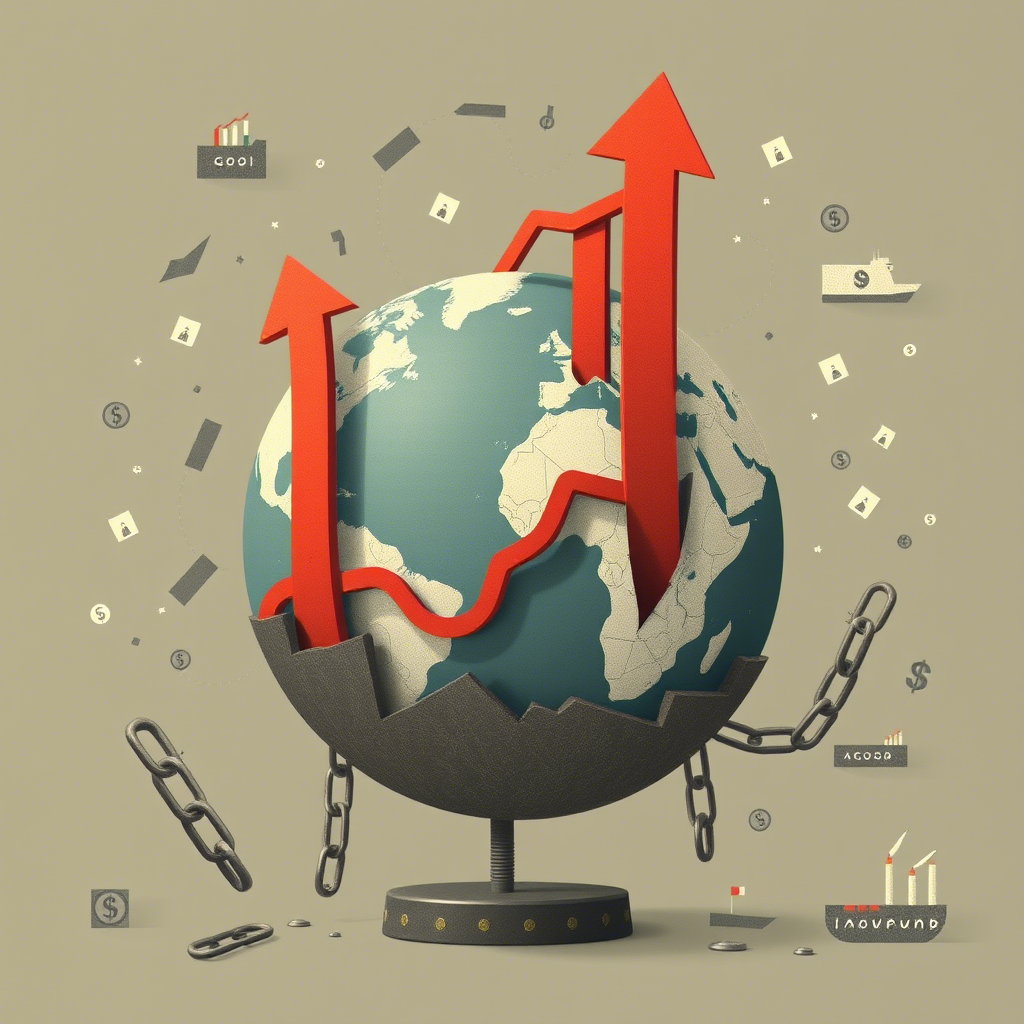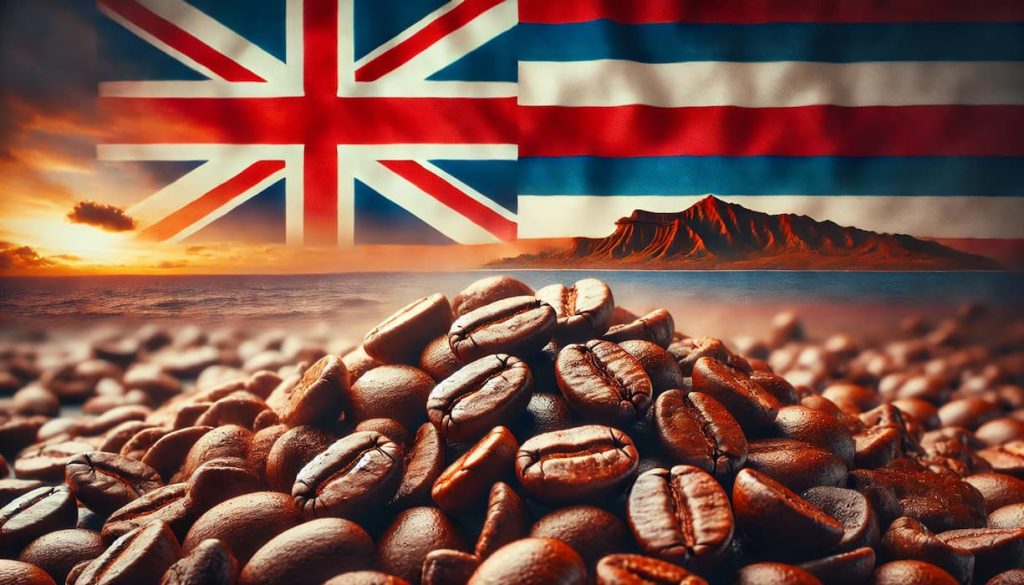Ever wondered what exactly happens when countries stop playing nice in global trade? What is a trade war? A trade war erupts when countries engage in economic combat by slapping protectionist policies against each other. Let me walk you through the fascinating world of trade wars – those economic battlegrounds where nations flex their muscles through taxes and restrictions.
What Is a Trade War?
Imagine this scenario: Country A imposes tariffs (taxes on imported goods) on Country B’s products. Country B, feeling the sting, retaliates with similar taxes on Country A’s exports. This back-and-forth taxation creates what economists call a “tariff war.”
According to economist Daniel Hall from High Point University, nobody emerges victorious from these economic skirmishes. Countries deploy trade wars as weapons to damage their opponent’s economy, but the real casualties? Everyday consumers like you and me who face higher prices for goods and services.
Countries wield several weapons in their trade war arsenal. All these barriers aim to reduce imports from the targeted country or make their products cost more for consumers.
| Trade War Weapons | How They Work |
| Tariffs | Taxes that make imported products more expensive |
| Import Quotas | Strict limits on how much of specific products can enter a country |
| Domestic Subsidies | Government financial support to make local goods cheaper |
| Currency Devaluation | Lowering currency value to make exports cheaper and imports pricier |
| Embargos | Complete bans on trading certain goods with specific countries |
When countries threaten trade wars – like a potential US-Colombia conflict – the effects ripple straight to consumers. Think higher prices for your morning coffee, Valentine’s Day flowers, or the gas powering your car.
Hall points out that while the current administration hasn’t engaged in trade wars, past conflicts still affect us today. Our economies depend heavily on imports to keep costs manageable.
Additionally, trade wars can worsen inflation. When countries impose tariffs, consumers quickly discover how much they rely on international products for everyday needs, leading to price increases across the board. This makes tariffs counterproductive when fighting inflation.
In essence, trade wars create a damaging cycle of revenge-driven trade restrictions that, despite claims of protecting domestic industries, ultimately hit consumers’ wallets and damage the broader economy.
5 Major Trade Wars Examples That Changed History
All of these trade wars throughout history simply can give a glimpse from what happens in a trade war! History gives us plenty of examples of trade wars that shaped our economic landscape:
1- Trade Wars Examples; The Smoot-Hawley Tariff Act (1930)
During the Great Depression, protectionist Republicans Smoot and Hawley pushed through massive tariff increases, believing this would boost American businesses. Despite strong opposition, the bill passed, triggering retaliatory tariffs from trading partners. The results? American unemployment doubled. The Reciprocal Trade Agreements Act of 1934 later began reversing these destructive measures. Interestingly, both Smoot and Hawley lost their seats in the following election – a harsh political price for their economic experiment.
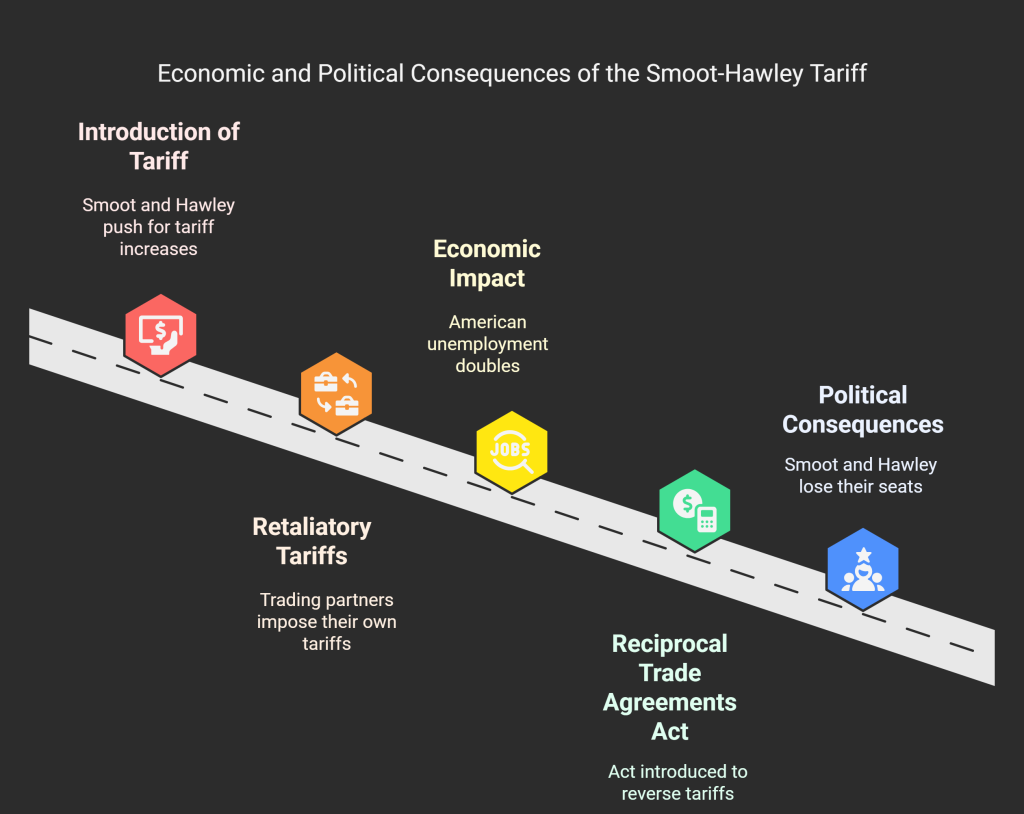
2- Trade Wars Examples; The Anglo-Irish Trade War (1932)
When Ireland gained independence, it immediately implemented steep protectionist policies against England to boost domestic industries. England struck back and demanded repayment of loans from Irish farmers, adding a 20% tariff to collect the debt. The countries negotiated a partial cease-fire in 1935 involving coal and cattle, but Ireland maintained strong protectionist policies through the 1950s. These decisions stunted Ireland’s trade growth and contributed to high emigration rates as economic opportunities diminished.
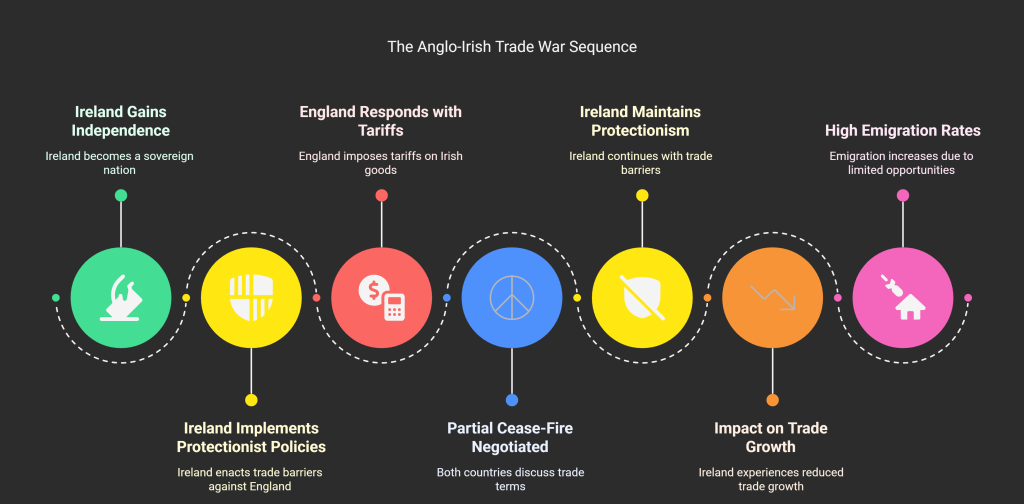
3- Trade Wars Examples; The Banana Wars (20-year conflict)
This fascinating conflict saw U.S. multinational corporations fighting proxy battles through Latin American banana-growing countries against the European Union. The trouble began in 1993 when the EU gave preferential market access to Caribbean nations by imposing heavy tariffs on Latin American bananas. This hurt U.S. corporations with interests in Latin American plantations, who promptly involved U.S. politicians and the World Trade Organization. The dispute triggered eight separate WTO cases and U.S. retaliatory tariffs against European products. The EU finally agreed in 2009 to gradually lower tariff rates over eight years, ultimately benefiting EU consumers who had been paying inflated prices.
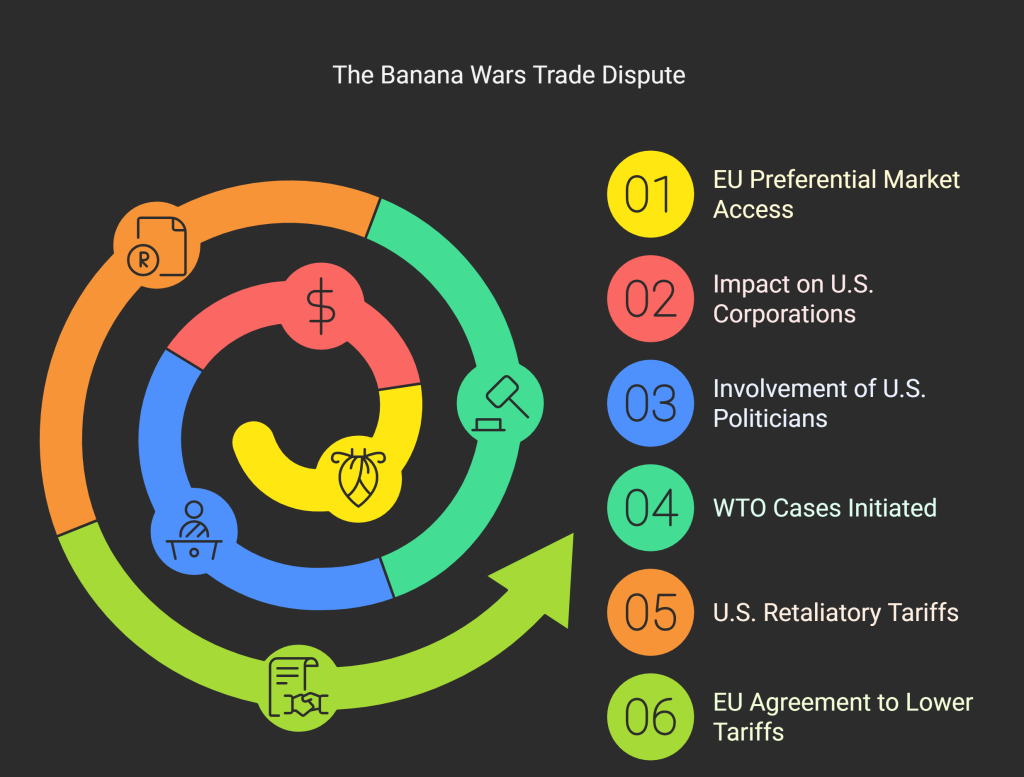
4- Trade Wars Examples; The Méline Tariff (France)
This tariff marked the end of a free trade era between England and France that began in 1860. The French Third Republic saw an unusual alliance form between industrialists and workers who both wanted protection from cheaper English products. Interestingly, while implementing this seemingly anti-English policy, France simultaneously entered the Entente Cordiale with England. Some scholars view the Méline tariff as more symbolic than substantive – a way to please domestic interests without significantly disrupting international trade.
5- The United States-Canada Trade War (75-year conflict)
This protracted conflict stemmed from U.S. protectionist policies after the Civil War, which ended the Canadian-American Reciprocity Treaty. Canada retaliated, and the two neighbors battled economically for 75 years, with tensions peaking during the Smoot-Hawley era. The geographical proximity allowed companies to easily relocate to dodge tariffs – about 65 U.S. manufacturing plants simply moved to Canada. U.S.-Canada trade relations only fully normalized with NAFTA’s arrival in 1994.
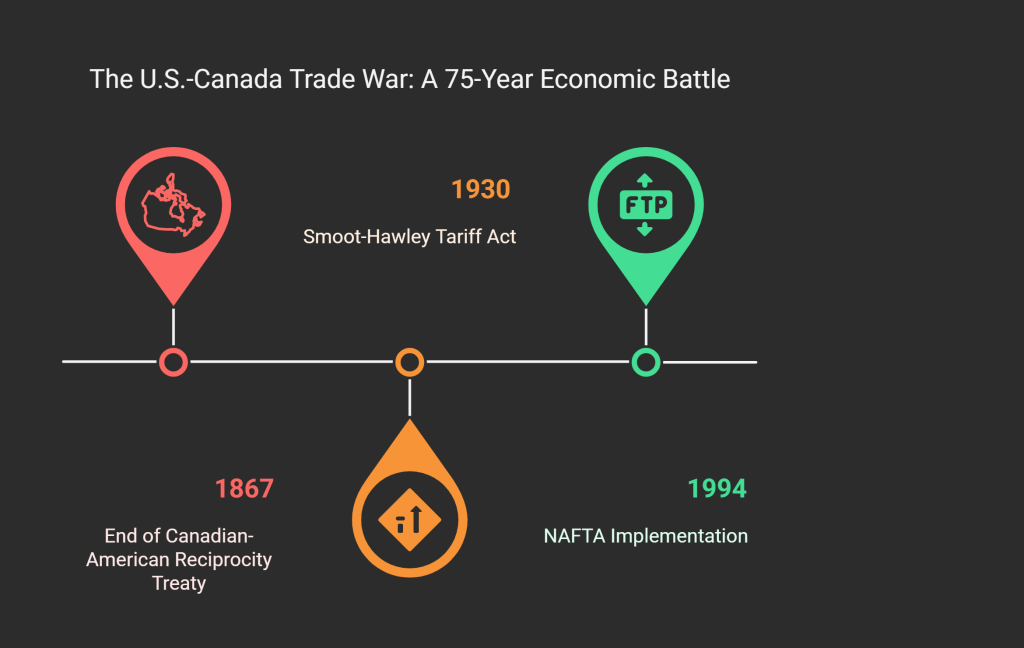
The Pros and Cons of Trade Wars
Trade wars come with both potential benefits and significant drawbacks. Let’s break them down:
| Pros of Trade Wars | Cons of Trade Wars |
| Protection of domestic industries from foreign competition | Higher consumer costs and inflation |
| Increased demand for locally-made goods | Marketplace shortages and reduced consumer choice |
| Potential for local job growth | Economic inefficiency and reduced international competitiveness |
| Improvement of trade deficits | Slowed economic growth and potentially fewer jobs overall |
| Punishment of unfair trading practices | Harm to non-protected domestic businesses |
| Increased government revenue through tariffs | Damaged international relations |
| Strategic advantages for national security | Risk of retaliation and escalation |
| Potential negative global ripple effects |
While trade wars might temporarily benefit specific domestic industries, most economic analyses show they cause significant long-term damage to all countries involved. Higher costs, reduced efficiency, and slower economic growth typically follow. As economist Hall emphasized, nobody truly wins a trade war – especially not the consumers caught in the crossfire.
So next time you hear about countries threatening tariffs and trade restrictions, remember that the real impact will likely show up in your shopping cart and bank account!
Who Won the Trade War?
The truth? Nobody wins.
Recent trade conflicts, especially between the U.S. and China, demonstrate this reality. Despite initial claims that trade wars are “easy to win,” both sides suffered significant damage. American consumers paid higher prices as U.S. importers absorbed the cost of tariffs on Chinese goods and passed them along. Chinese manufacturers faced slowdowns, but their surplus economy gave them certain advantages in weathering the storm.
U.S.-China Trade War Timeline (2018-2025)
| Date | Event |
| January 2018 | Trump administration escalates trade tensions with China |
| Early 2018 | U.S. threatens China with substantial fines over IP theft and announces tariffs |
| Mid 2018 | China retaliates with 25% tax on over 100 U.S. products |
| Throughout 2018 | Both nations engage in cycles of threats and proposed tariffs |
| May 2019 | Tariffs on Chinese imports reach nearly $200 billion of goods |
| May 2019 | U.S. increases tariffs from 10% to 25% on $200 billion of Chinese imports |
| Mid 2019 | China halts all farm product imports by state-owned firms and weakens its currency |
| January 15, 2020 | U.S. and China sign trade deal to de-escalate tensions |
| 2024 | Under President Biden, U.S. raises tariffs: 100% on Chinese EVs, 50% on solar cells and semiconductors |
| Early 2025 | Trade tensions continue with expectations of further escalation |
Even when countries reach trade deals, like the U.S.-China agreement in January 2020, tensions often persist. In 2024, the U.S. raised new trade barriers, triggering fresh Chinese retaliation.
The strategic costs run deep. Countries dependent on imports of critical goods become vulnerable during trade wars, potentially facing shortages and economic stagflation. This vulnerability increases for nations with trade deficits.
Trade wars ultimately leave both sides worse off, with restricted access to desired goods and services, reduced purchasing power, and long-term economic damage. The lesson? In the global economic battlefield, everyone takes casualties—and nobody truly wins.
What Does It Mean to Win A Trade War? Where We Stand Today!
As of early 2025, the U.S. and China remain locked in significant trade tensions, with high tariffs still in place on various goods. The potential for further escalation looms large, particularly with possible future actions by the U.S.
The U.S.-China trade war teaches us an important lesson: trade disputes rarely produce true winners. Instead, they create cycles of tariffs and retaliation, drive up prices for consumers, and slow economic growth for everyone involved. As we continue to monitor this economic conflict, remember that cooperation, not confrontation, typically delivers better outcomes for all parties involved.
FAQ
1- Do trade wars actually protect jobs? Short-term, maybe. They might temporarily shield specific industries from foreign competition. Long-term, most economists agree they destroy more jobs than they create by raising costs for businesses using imported materials and reducing overall economic activity through higher consumer prices.
2- Who typically pays for tariffs in a trade war?
Despite what politicians claim, consumers in the importing country usually end up paying. The IMF found during the US-China trade war that American importers bore most costs and passed them to consumers. It’s essentially a tax on your own people.
3- Why would a country start a trade war if they’re economically harmful?
Political reasons usually. Trade wars appeal to nationalist sentiments and can win support from specific industries being protected. They also serve as negotiation leverage or as punishment for perceived unfair practices, regardless of their overall economic wisdom.
4- Was the Smoot-Hawley Tariff Act really as bad as people say?
Yes. It’s considered an economic disaster that deepened the Great Depression. When the US raised tariffs in 1930, trading partners retaliated, global trade collapsed by roughly 66%, and unemployment doubled. Both Smoot and Hawley lost their next elections.
5- Are there any successful trade wars in history?
Not really. Even “successful” ones like some US-Japan disputes in the 1980s had mixed results. The semiconductor agreement technically achieved US goals but at significant cost to consumers. Most trade wars end with mutual damage and eventual compromise.
6- Is China “winning” the trade war with the US?
Neither side is winning. China’s manufacturing suffered, but the US saw higher consumer prices and farmers needed bailouts. It’s more accurate to say China might be losing less due to its ability to redirect exports and its more centrally-controlled economy.
7- Do trade wars lead to actual wars?
They can contribute to international tensions but rarely directly cause military conflict. However, economic hostility often accompanies broader geopolitical rivalry. The breakdown of international trade in the 1930s is considered a factor in the lead-up to WWII.
8- Why don’t WTO rules prevent trade wars?
The WTO has dispute resolution mechanisms, but enforcement is limited. Countries can claim “national security” exemptions or simply ignore rulings. The system works through cooperation, and when major powers decide to bypass it, there’s little stopping them.
9- Can a country win a trade war against a much larger economy?
Unlikely. Smaller economies have less leverage and fewer alternative markets. However, they can inflict targeted pain on politically sensitive industries in the larger country, potentially forcing concessions if the larger country’s leadership feels pressure.
10- How do trade wars affect global supply chains?
They fragment them. Companies shift production to avoid tariffs, creating inefficiencies. The US-China trade war accelerated “nearshoring” and “friend-shoring” trends, with companies moving operations to countries like Vietnam or Mexico to avoid tariffs while staying in regional networks.
11- Are we currently in a global trade war?
We’re in a period of increased protectionism and strategic competition, particularly between the US and China. While not a full-scale trade war like the 1930s, tariffs remain elevated and both major powers are using trade as a geopolitical tool.
12- What industries are most vulnerable during trade wars?
Agriculture often suffers most as it’s politically sensitive and easy to target. High-tech industries with complex supply chains are also vulnerable. Industries relying on imported components face higher costs while those dependent on exports lose market access.
13- Do consumers ever benefit from trade wars?
Rarely. The fundamental economic effect is higher prices and reduced choices. Even when domestic industries are “protected,” the inefficiencies and retaliatory measures typically outweigh any consumer benefits.
14- Is protectionism ever justified?
Sometimes, temporarily. Infant industry protection might help establish strategic industries, and countermeasures against unfair competition can level the playing field. However, long-term protectionism generally leads to inefficiency and economic stagnation.
15- How do trade wars end?
Usually through negotiation after mutual economic pain becomes too great. Neither side typically achieves all their goals, but face-saving agreements allow both to claim partial victories. Resolution often involves dispute settlement mechanisms or gradual tariff reductions.
16- Are import quotas worse than tariffs?
Economically, yes. Quotas create artificial scarcity without generating government revenue. They also tend to create windfall profits for those with quota rights. However, politicians sometimes prefer them because the price increases are less visible to consumers.
17- What’s the difference between trade sanctions and a trade war?
Intent and scope. Sanctions are primarily political tools designed to change behavior in areas unrelated to trade (like human rights or nuclear proliferation). Trade wars focus on economic objectives related to traded sectors. However, the line often blurs as economic and political goals intermix.
